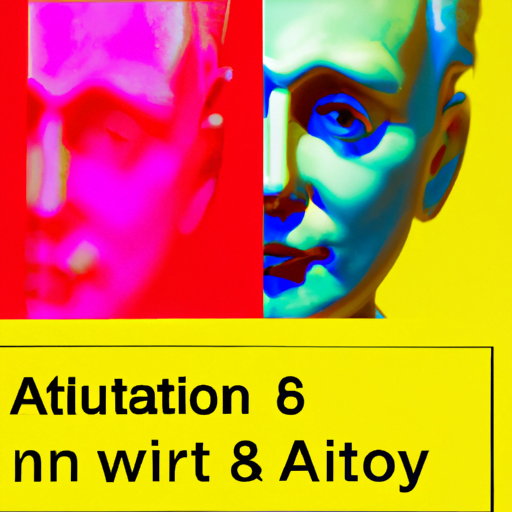
-
Table of Contents
- Innovations in UI/UX Design: How AI is Redefining Interactions
- The Role of AI in UI/UX Design
- 1. Automated Design Processes
- 2. Personalized User Experiences
- 3. Natural Language Processing (NLP)
- AI-Powered UI/UX Design Tools
- 1. Adobe Sensei
- 2. Framer X
- 3. Sketch2React
- The Future of AI in UI/UX Design
- 1. Enhanced User Research
- 2. Augmented Reality (AR) and Virtual Reality (VR)
- 3. Emotional Design
- Conclusion
Innovations in UI/UX Design: How AI is Redefining Interactions

Artificial Intelligence (AI) has been revolutionizing various industries, and UI/UX design is no exception. With the advancements in AI technology, designers now have access to powerful tools and techniques that can enhance user experiences and redefine interactions. In this article, we will explore the innovations in UI/UX design driven by AI and how they are transforming the way users interact with digital products.
The Role of AI in UI/UX Design
AI has the potential to significantly impact UI/UX design by automating repetitive tasks, providing personalized experiences, and improving overall usability. Let’s delve into some of the key areas where AI is making a difference:
1. Automated Design Processes
Traditionally, UI/UX designers spent a considerable amount of time on repetitive tasks such as creating wireframes, prototyping, and generating design variations. However, AI-powered tools like Sketch2React and Framer X are automating these processes, allowing designers to focus more on creativity and problem-solving. These tools use machine learning algorithms to analyze design patterns and generate code snippets, reducing the time and effort required to create interactive prototypes.
Case Study: Airbnb, a leading online marketplace for accommodations, implemented an AI-powered tool called Sketch2React. This tool helped their design team automate the process of converting design files into code, resulting in a 50% reduction in development time and improved collaboration between designers and developers.
2. Personalized User Experiences
AI enables designers to create personalized user experiences by leveraging user data and behavior patterns. By analyzing user preferences, AI algorithms can recommend relevant content, suggest personalized layouts, and adapt interfaces based on individual needs. This level of personalization enhances user engagement and satisfaction.
Example: Netflix, a popular streaming platform, uses AI algorithms to analyze user viewing habits and provide personalized recommendations. By understanding user preferences, Netflix can offer a tailored user interface that showcases content based on individual interests, resulting in increased user engagement and retention.
3. Natural Language Processing (NLP)
Natural Language Processing (NLP) is a branch of AI that focuses on the interaction between computers and human language. NLP enables designers to create conversational interfaces that understand and respond to user queries in a natural and intuitive manner. Chatbots and virtual assistants are prime examples of NLP-driven UI/UX design.
Statistics: According to a report by Grand View Research, the global chatbot market is expected to reach $1.25 billion by 2025, with a compound annual growth rate (CAGR) of 24.3% from 2019 to 2025.
AI-Powered UI/UX Design Tools
Several AI-powered tools have emerged in the market, empowering designers to create innovative and user-centric interfaces. Let’s explore some of these tools:
1. Adobe Sensei
Adobe Sensei is an AI and machine learning framework developed by Adobe. It offers a range of AI-powered features that enhance the design process. For example, Sensei can automatically remove backgrounds from images, suggest color palettes based on an image, and even generate realistic 3D models from 2D images. These features enable designers to work more efficiently and creatively.
2. Framer X
Framer X is a powerful design tool that combines the flexibility of code with the simplicity of visual editing. It uses AI algorithms to analyze design patterns and generate code snippets, allowing designers to create interactive prototypes without writing code. Framer X also offers a wide range of pre-built components and animations, making it easier for designers to create engaging user experiences.
3. Sketch2React
Sketch2React is an AI-powered tool that automates the process of converting design files into code. It analyzes design patterns and generates code snippets, reducing the time and effort required for front-end development. Sketch2React also enables designers to create interactive prototypes directly within Sketch, a popular design tool, streamlining the design and development workflow.
The Future of AI in UI/UX Design
As AI continues to advance, the future of UI/UX design looks promising. Here are some potential developments we can expect:
1. Enhanced User Research
AI can assist designers in conducting user research by analyzing large amounts of data and identifying patterns and trends. By automating the research process, designers can gain valuable insights into user behavior and preferences, enabling them to create more user-centric designs.
2. Augmented Reality (AR) and Virtual Reality (VR)
AI-powered AR and VR technologies have the potential to revolutionize UI/UX design by creating immersive and interactive experiences. By combining AI algorithms with AR/VR, designers can develop interfaces that respond to user gestures and movements, providing a more intuitive and engaging user experience.
3. Emotional Design
AI algorithms can analyze user emotions and sentiments by analyzing facial expressions, voice tones, and other physiological cues. This data can be used to create emotionally intelligent interfaces that adapt to the user’s mood and provide appropriate responses, resulting in a more empathetic and personalized user experience.
Conclusion
AI is transforming the field of UI/UX design by automating processes, personalizing experiences, and enabling more intuitive interactions. With AI-powered tools and technologies, designers can create innovative and user-centric interfaces that enhance user engagement and satisfaction. As AI continues to evolve, we can expect even more exciting developments in the future, further redefining the way users interact with digital products.
